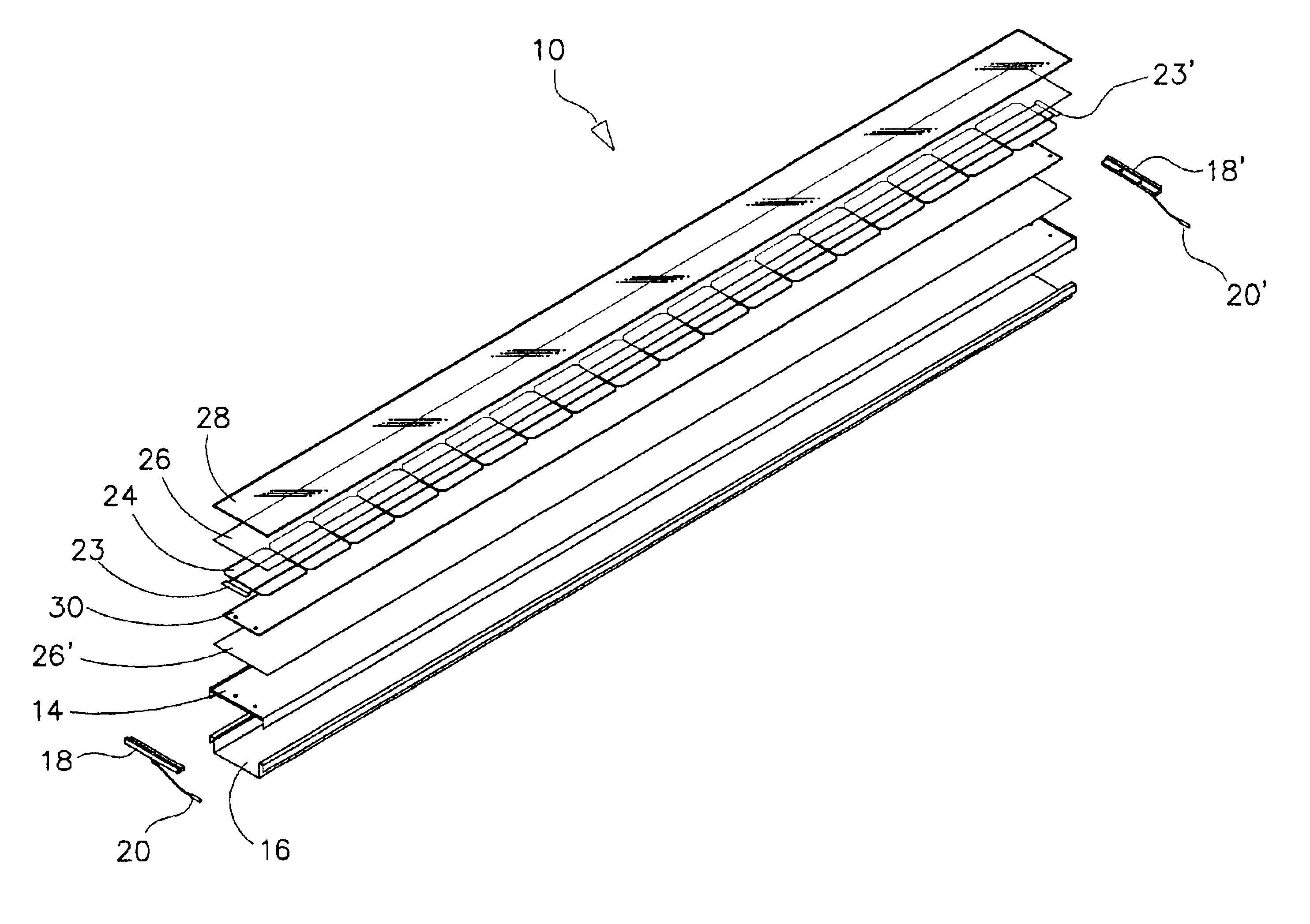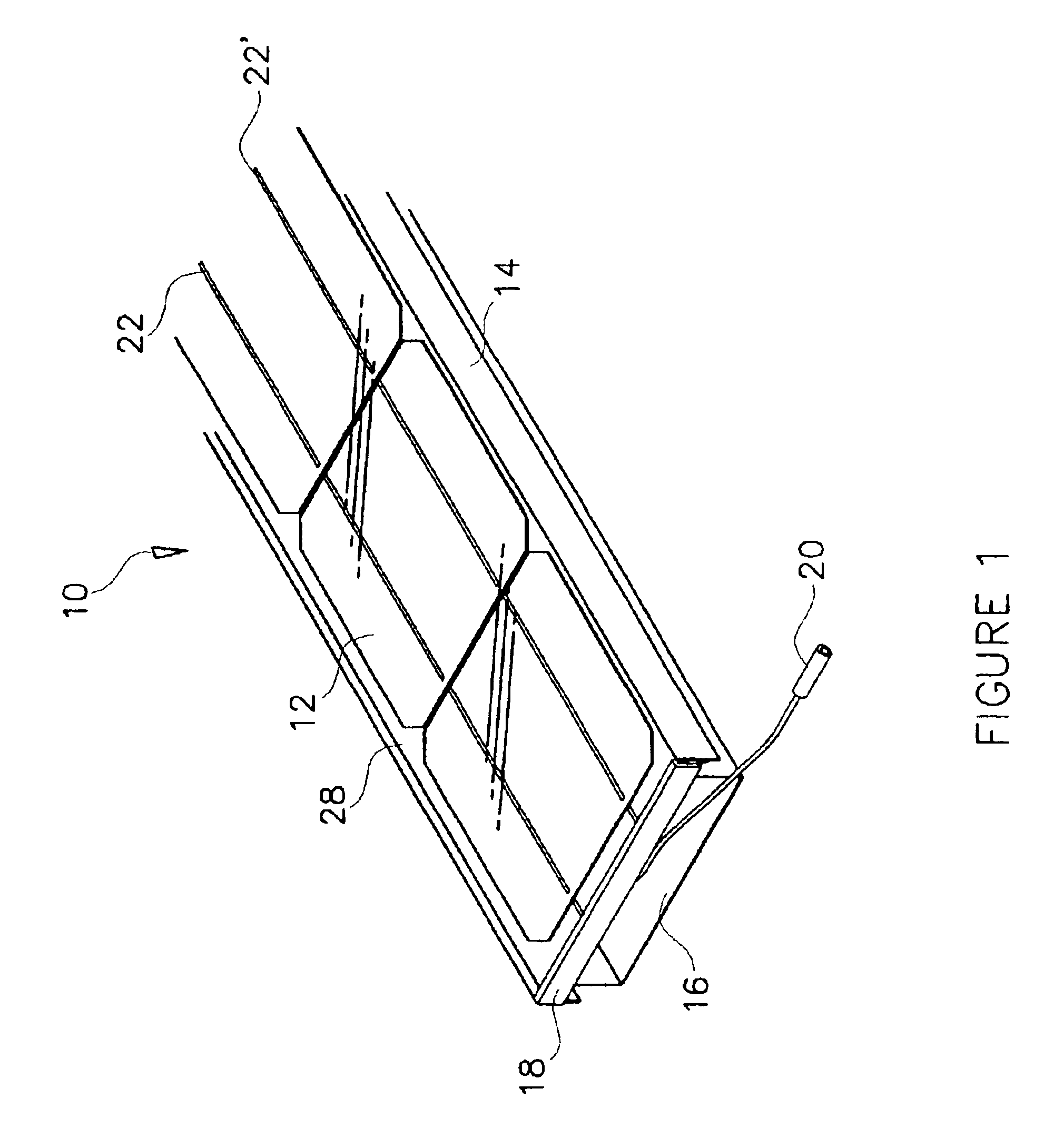Assembly method and apparatus for photovoltaic module
a photovoltaic module and assembly method technology, applied in the field of photovoltaic modules, can solve the problems of large factory space, damage to circuits, and difficulty in automating assembly, and achieve the effects of reducing the cost of pv modules, reducing the cost of electricity produced by pv modules of the present invention, and being easy to adap
- Summary
- Abstract
- Description
- Claims
- Application Information
AI Technical Summary
Benefits of technology
Problems solved by technology
Method used
Image
Examples
examples
A subscale PV module of the present invention was assembled with four solar cells. Data was obtained on a Sun DC Ammeter Model AM2, and a controlled tilting table was used for control of the angle of incidence of sunlight. The results of the output electrical current from this module as a function of light angle of incidence are shown in FIG. 9. The peak output current obtained was 4.45 amperes in direct sunlight.
The results of tracking tests using the PV module of the present invention mounted horizontally in sunlight as well as mounted in a tracking device to follow the sun provided the basis for estimating the electrical current output of the module as a function of the time of day. The results are shown in FIG. 10. Referring to FIG. 10, time of day is shown on the horizontal axis and output current is shown in amperes on the vertical axis. The bottom plot represents the horizontal, non-tracking PV module while the upper plot represents the tracking PV module.
PUM
 Login to View More
Login to View More Abstract
Description
Claims
Application Information
 Login to View More
Login to View More - R&D
- Intellectual Property
- Life Sciences
- Materials
- Tech Scout
- Unparalleled Data Quality
- Higher Quality Content
- 60% Fewer Hallucinations
Browse by: Latest US Patents, China's latest patents, Technical Efficacy Thesaurus, Application Domain, Technology Topic, Popular Technical Reports.
© 2025 PatSnap. All rights reserved.Legal|Privacy policy|Modern Slavery Act Transparency Statement|Sitemap|About US| Contact US: help@patsnap.com



